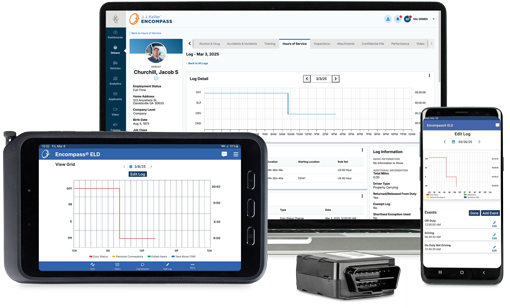Sr. Transportation Management Editor — J. J. Keller & Associates, Inc.
7 Appropriate Off Duty Uses for Personal Conveyance
FMCSA added flexibility for fleets by the removal of the "unladen" term.
Published On: 02/28/2024


Written by:
Mark Schedler
This article was updated on 2/28/2024.
The FMCSA guidance on personal conveyance provides additional flexibility for fleets that choose to allow their drivers to utilize off-duty driving or personal conveyance. The flexibility comes from the removal of the “unladen” term, which eliminates the strict requirement for a driver’s vehicle to be “empty,” and the appropriate use scenarios in Interpretation Question #26 from §395.8.
Each personal conveyance scenario will be reviewed by enforcement based on at least these 4 primary points:
- Is the driver ill or fatigued? Does the driver’s condition allow them to safely drive the vehicle?
- Is the driver off-duty? See the definition of on-duty in §395.2 which includes any work in support of the business or time involved in business activities. Unless the driver is completely released from duty and free to pursue activities of their choosing, the driver must log on-duty.
- Is the move purely personal with no benefit to the business? A move benefitting the business would include moving closer to the driver’s next pick up or delivery, or a maintenance move performed to support the business.
- Is the move to strictly seek the closest, safe place to park, even if a driver has moved along the route line to the next business-related location?
7 Examples of Appropriate Uses of a CMV While Off-duty for Personal Conveyance
Examples of appropriate uses of a CMV while off-duty for personal conveyance include, but are not limited to:
- Time spent traveling from a driver’s en route lodging (such as a motel or truck stop) to restaurants and entertainment facilities.
- Commuting between the driver’s terminal and his or her residence, between trailer-drop lots and the driver’s residence, and between work sites and his or her residence. In these scenarios, the commuting distance combined with the release from work and start to work times must allow the driver enough time to obtain the required restorative rest as to ensure the driver is not fatigued.
- Time spent traveling to a nearby, reasonable, safe location to obtain required rest after loading or unloading. The time driving under personal conveyance must allow the driver adequate time to obtain the required rest in accordance with minimum off-duty periods under 49 CFR 395.3(a)(1) (property-carrying vehicles) or 395.5(a) (passenger-carrying vehicles) before returning to on-duty driving, and the resting location must be the first such location reasonably available.
- Moving a CMV at the request of a safety official during the driver’s off-duty time
- Time spent traveling in a motorcoach without passengers to en route lodging (such as motel or truck stop), or to restaurants and entertainment facilities and back to the lodging. In this scenario, the driver of the motorcoach can claim personal conveyance provided the driver is off-duty. Other off-duty drivers may be on board the vehicle, and are not considered passengers.
- Time spent transporting personal property while off-duty.
- Authorized use of a CMV to travel home after working at an offsite location.
Read about examples of inappropriate uses of personal conveyance.
Hear from Our Experts!
Watch this episode of the DOT & ELD Regulatory Minute for guidance from J. J. Keller regulatory experts. Subscribe to our YouTube channel for the latest compliance & safety insights!
You may also enjoy the following articles:
Sign up for our newsletter!
We'll help you stay on top of regulations, best practices, and fleet industry news. Sign up to receive a monthly email notification with links to our most recent blog articles, free resources, and event invites.
